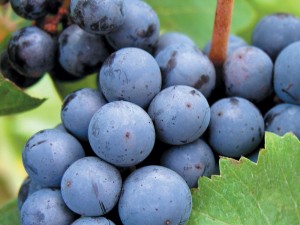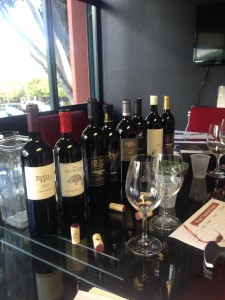For our last exploration of Paso Robles varietal wines from the Bordeaux family, we turn to Cabernet Franc, which is being beautifully produced as a stand-alone variety by several Paso Robles CAB Collective members.
For background on Cabernet Franc – as well as discussions on typicity – we turn once again to wine educator Jancis Robinson, who demonstrates on her website that it’s tough to discuss Cabernet Franc without comparing it to its more famous kin, Cabernet Sauvignon:
“I’m not a huge enthusiast of the sexual stereotyping of wines but even I can see that Cabernet Franc might be described as the feminine side of Cabernet Sauvignon. It is subtly fragrant and gently flirtatious rather than massively muscular and tough in youth. Because Cabernet Sauvignon has so much more of everything – body, tannin, alcohol, colour – it is often supposed to be necessarily superior, but I have a very soft spot indeed for its more charming and more aromatic relative, Cabernet Franc…
As a vine and a wine, Cabernet Franc is more precocious than Cabernet Sauvignon – but then most varieties are. Cabernet Franc buds and ripens at least a week before Cabernet Sauvignon, which makes it particularly useful in Bordeaux’s cooler vintages when the more famous Cabernet may not reach full ripeness at all. In fact, underripe Cabernet Sauvignon can smell remarkably like fully ripe Cabernet Franc, both of them exhibiting a certain leafy, currant bush aroma. But fully ripe Cabernet Franc has a lovely lightness of touch, lighter and softer than Cabernet Sauvignon so that the wines can mature several years ahead of Cabernet Sauvignon grown in the same vineyard.
In practice the two varieties are typically grown together and blended in to the same wine. This is certainly true of the Médoc and Graves in Bordeaux, where Cabernet Franc, and the plumper but in many ways quite similar Merlot, are grown as a sort of insurance policy against Cabernet Sauvignon’s not ripening properly. And they can also provide usefully softening blending material in this temperate climate which rarely produces Cabernet Sauvignon so ripe that it makes a well balanced 100% varietal wine (in stark contrast to, say, northern California).”
As for Cabernet Franc on California’s Central Coast, the variety is definitely finding its niche among vineyard managers, winemakers, and consumers. Here we profile Cab Franc from PRCC members Villa San-Juliette Vineyard & Winery, Hunt Cellars, Ancient Peaks Winery and Chateau Margene.
Villa San-Juliette 2010 Reserve Cabernet Franc
“This wine is the match for winter stews and braised lamb,” say VSJ’s official tasting notes, and they’re spot on; with a ruby red color, this bold wine opens with effusive aromas of black cherry and pepper, extending into the palate with bright acids and fine tannins, flavors of red fruits, cola, chocolate, and cedar, with a soft finish.
Hunt Cellars 2006 “Opulence” Cabernet Franc
Given its age, the color on this wine leaned toward brick red with aromas of red fruits, earth, dust and petrol, followed by flavors of cherries and bright, well-integrated tannins.
Ancient Peaks 2012 Cabernet Franc
One of the younger Cabernet Francs we tasted, this wine was ruby in color with primary notes of red currant, cranberry and strawberry on the nose as well as red berries and a touch of oak on the palate. Finely textured and light in body, this wine’s firm structure, long finish and abundance of fruit make it an excellent candidate for cellaring.
Chateau Margene 2012 Cabernet Franc
This wine shows layers and depth, even at a young age, with primary aromas of strawberry, cherry, framed with notes of coffee, vanilla, and toast. Vanilla and a touch of oak come through on the palate, as well as damp forest floor, fine tannins and delicate structure that extend into the lengthy finish.


